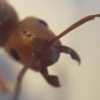- Formiculture.com
- Forums
- Gallery
- Members
- Member Map
- Chat

Nare's Ant Journal
Started By
Nare
, Aug 3 2019 6:27 PM
pogonomyrmex occidentalis formica wheeleri camponotus pennsylvanicus journal ants
86 replies to this topic
#21
 Offline
-
Posted November 24 2019 - 9:03 AM
Offline
-
Posted November 24 2019 - 9:03 AM
Sounds like a really fun colony. The more I read about these, the more tempted I am to shell out for some. Hmmmm.
- Nare likes this
"The ants are a people not strong, yet they prepare their meat in the summer." Prov. 30:25
Keep ordinary ants in extraordinary ways.
Keep ordinary ants in extraordinary ways.
#22
 Offline
-
Posted November 24 2019 - 1:36 PM
Offline
-
Posted November 24 2019 - 1:36 PM
Sounds like a really fun colony. The more I read about these, the more tempted I am to shell out for some. Hmmmm.
I definitely would - they grow super fast and are pretty active. And they eat / store seeds which is neat.
#23
 Offline
-
Posted November 24 2019 - 3:13 PM
Offline
-
Posted November 24 2019 - 3:13 PM
How many workers do you think there are?
"God made..... all the creatures that move along the ground according to their kinds (including ants). And God saw that it was good. Genesis 1:25 NIV version
Keeping:
Tetramorium immigrans Camponotus vicinus, modoc, novaeboracensis, herculeanus
Formica pallidefulva, argentea Solenopsis molesta
Formica cf. aserva Lasius brevicornis, neoniger
#24
 Offline
-
Posted November 29 2019 - 7:10 PM
Offline
-
Posted November 29 2019 - 7:10 PM
How many workers do you think there are?
20 or 30 I'd say? It's difficult to tell, and I've never been one for counting. There is certainly a lot of brood.
- TennesseeAnts likes this
#25
 Offline
-
Posted February 1 2020 - 7:07 PM
Offline
-
Posted February 1 2020 - 7:07 PM
Update 4 (01/02/2020)
So you may have noticed that the title of this journal has changed. That's because I've decided to introduce some of my other ants, most notably my Formica creightoni colony who I'll get back to later.
First, I just wanted to share a picture of the new setup I've put together. I used to keep my ants in 2l plastic containers that were 20cm by 15cm by 10 cm tall. Now these were okay when most of my ants were in hibernation, but as I took more and more out, I found that I was pressed for space. So I ran to Dollarama and picked up a bunch of rectangular desk organizers that serve as perfect outworlds, and take up much less space. I also found some trays at the store that fit 4 of these organizers perfectly, so I decided to grab a pair of those as well. So here's what the setup looks like:

From left to right: Pogonomyrmex occidentalis, Formica creightoni, and 2x Formica cf. subaenescens
I'm really happy with how well these containers fit, and I estimate I can comfortably fit 5 test tubes in each container before I need to move the ants out into something bigger, which at that point would probably be a proper nest. The one downside to these containers is that they don't have lids, so I'm relying on a liberal application of byFormica fluon to keep the ants in their separate containers. So far it's holding strong.
I'll start off with some pictures of the Pogonomyrmex:











As you can see, they're doing pretty well. Good amount of brood, of all stages. They've also been collecting some seeds, and have nibbled at protein from time to time. Her royal highness always runs into the straw that goes through the cotton plug at the front of their test tube whenever I shine light on the setup, so I had to wait for her to emerge in order to take some pics. Camera quality isn't the greatest, because unfortunately I can't get my phone in close enough to use the macro, but it's still alright - lighting is key. You can also see the queen's beard in the last pic.
I'm satisfied with how these guys have been doing - they've been growing pretty consistently since the first workers arrived, and they've been pretty easy to care for. All in all, I'd definitely recommend these guys as a must keep species - they're all fun, no headache.
Next, I'd like to introduce my Formica creightoni colony








I got these guys back in October, and took them out of hibernation midway through January. This colony is actually composed of a Formica creightoni queen and about 25 Formica oreas host workers. When I got the colony, the oreas were freshly eclosed, so they were a light orange colour, which was really neat. They've since darkened with age. As you can see, the queen recently laid a large batch of eggs, which is super exciting, as this is my very first parasitic Formica species that I've gotten to lay eggs (granted the other two species are still hibernating, but nonetheless, it's cool).
Some of you may remember that I had caught a Formica cf subintegra queen back in July of last year, unfortunately she and her colony were slain by some escaped Tetramorium workers before she could lay any eggs. Needless to say, I no longer keep Tetramorium, nor am I interested in keeping them again.
Anyways, I'm super excited for these guys to get going - from what I've seen, parasitic Formica growth is extremely fast, so it should be fun to watch this colony progress.
On a side note, you guys might be wondering about the two Formica cf. subaenescens colonies that I mentioned above. These colonies are my "Farmica", and the idea is that I'll be able to harvest them for brood and host workers in the future to give to parasitic Formica queens and any potential slave raiders I may find. We'll see if this actually works in practice, but it should be a fun experiment nonetheless. I don't really consider these ants interesting enough to focus on in this journal, so I won't be posting any photos / updates of them unless anyone is actually interested.
Anyways, that's it for now. My next update should be around the end of Febraury, when I take my Formica ulkei and Formica aserva queens out of hibernation. Hopefully I'll also have some biological Formica creightoni workers by then as well.
- Ants4fun, drtrmiller, rbarreto and 1 other like this
#26
 Offline
-
Posted February 8 2020 - 12:11 PM
Offline
-
Posted February 8 2020 - 12:11 PM
Update 5 (08/02/20)
Just a quick update - I'm aware it's only been a week, but I figured since this creightoni business is all new, I should record everything notable. And when I checked today, I found something quite notable indeed - the eggs and small larvae from last week are now several large larvae and some pupae - I have never ever had an ant colony grow this fast. The pupae are smaller than the host workers right now, which is probably to be expected - nanitics and all that. I've also noticed a new batch of eggs, similar in size to the first one. I've been feeding these guys a lot, I gave them a mealworm last weekend, again last Wednesday, and again today. I think they're gonna need all the protein they can get if they keep growing this fast. I'm also going to need to start thinking about a proper formicarium for them - whether that be homemade or purchased from a store.
In other news, I checked on my prized Formica ulkei queen this weekend, only to find her dead in the fridge. Upon inspection, her abdomen literally fell off when I dumped her out of the tube, so I assume she's been dead for a little while at this point. Which really sucks, cause queens of this species are super rare, and I was really looking foreword to raising a colony of them. Seems like that'll have to wait until July, when they fly. Ultimately, at this rate, I won't get a colony of them going until next year, as they don't seem to lay until after hibernation...
At the very least, my Formica aserva queen is still alive and looks healthy. Her host workers are deceased at this point, but I should have lots of creightoni brood to give to her when I take her out at the end of the month.
- rbarreto likes this
#27
 Offline
-
Posted February 8 2020 - 12:17 PM
Offline
-
Posted February 8 2020 - 12:17 PM
#28
 Offline
-
Posted February 8 2020 - 12:30 PM
Offline
-
Posted February 8 2020 - 12:30 PM
RIP ulkei
Maybe your farmica will have some brood ready by the end of the month and you won't have to sacrifice some creightoni brood.
We'll see. Both colonies have finally moved into their test tubes, but none have laid yet. They're munching on their first mealworms right now, so brood might be here soon.
#29
 Offline
-
Posted February 18 2020 - 12:34 PM
Offline
-
Posted February 18 2020 - 12:34 PM
Update 6 (18/02/20)
Might edit this later to add photos, but I just wanted to mark it down - my Formica wheeleri's first biological worker has arrived.
EDIT: Should mention, the creightoni were reID'd as wheeleri.
Edited by Nare, February 18 2020 - 12:41 PM.
#30
 Offline
-
Posted February 25 2020 - 6:01 PM
Offline
-
Posted February 25 2020 - 6:01 PM
Update 7 (25/02/20)
Picture time! I'll start off with the Formica wheeleri (formerly F. creightoni in this journal):
Here are some host workers. They have really good eyesight, so they always freeze when they see me. Makes them good subjects for photos.


I let them move into a test tube with some coco fibre substrate, which they have since cleared out and scattered across the whole outworld.


Here's some pictures of the freshly eclosed nanitics. Pretty cute, but they darken up really fast.


Here's a pic of one of the nanitics standing over the brood pile. The test here is to see if the nanitics bother to care for brood, as that may be an indication that this species produces a brood care caste, and so is not an obligate slave raider.



Here are some pictures of them from today:



Unfortunately the queen's obscuring a fresh new batch of eggs with her abdomen, but you can see they're doing well. A fair amount of pupae, some larvae, and lots of eggs. The initial batch of nanitics have darkened up, and some of the new ones are starting to get colour as well, as you can see in the images above.
As I'm writing this, I can see some of the nanitics cleaning the brood pile, which I'll take as good news. So far, this species has been a blast to keep, and I'm super excited to see how they grow. From what I've heard, their larger workers can have bright red heads, whilst the smaller workers still have dark red heads - so there should be lots to look forwards to.
Another ant I'd like to introduce is my Formica aserva queen, who had some host workers before hibernation, but unfortunately they passed away. I gave her a few wheeleri pupae, and I'm happy to say that they've all been opened, and the aserva now has some wheeleri host workers.


Here you can see some pupae in the process of eclosing. Unfortunately one of the pupae is dead, not sure why, but the rest turned out alright.



As for the Pogonomyrmex, they're still doing well. I'm starting to see some larger brood items appearing, which is cool.
Finally, here are some bonus Camponotus pennsylvanicus pics that I accidently uploaded. Unfortunately it looks like their queen died in hibernation, but the rest of the colony looks alright. They've been drinking lots of sugar water, as show by their fat abdomens.




...and yes, they're in a grimy AC nest, which is probably the reason why the queen died - the thing doesn't even hold water for a week. I'm planning just pitching in the money and getting some nice THA nests, so next time you see them, hopefully they'll be in that. I'm also going to try to introduce a new queen to them, so we'll see how that goes. The plan is to cover the end of the queen's tube with mesh and put it in the outworld, and let the workers adjust to her scent, and then remove the mesh. Hopefully they'll accept her, cause it'd be a shame to let this colony just dwindle away to nothing.
Anyways, that's it for now.
- DDD101DDD likes this
#31
 Offline
-
Posted February 25 2020 - 6:16 PM
Offline
-
Posted February 25 2020 - 6:16 PM
I really appreciate your detailed ant and termite journals, but I can’t see any of your photo links. Have you ever considered posting photos direct through the FC gallery?
Edited by ANTdrew, February 25 2020 - 6:25 PM.
- Nare likes this
"The ants are a people not strong, yet they prepare their meat in the summer." Prov. 30:25
Keep ordinary ants in extraordinary ways.
Keep ordinary ants in extraordinary ways.
#32
 Offline
-
Posted February 25 2020 - 6:54 PM
Offline
-
Posted February 25 2020 - 6:54 PM
I really appreciate your detailed ant and termite journals, but I can’t see any of your photo links. Have you ever considered posting photos direct through the FC gallery?
You can't see any of them? Thanks for bringing this to my attention - half the value of the journal is photos... I use the forum link from Imgur, because I find that super simple. I could link the Imgur album at the end of each update and let people view that if the pictures don't load. I don't really want to use the FC direct upload, because I can't really figure it out - with Imgur, I just upload the photos on the app on my phone, and then link them from the app on my computer. Not sure how the forum gallery works, but I don't really want to have to download and upload and deal with all that... I wonder why the photos don't show. Do you view formiculture on your mobile device or something? Anyways, in the mean time, here's the imgur link for now, I'll ask around and try and find a fix for this issue. Thanks again for bringing this issue to my attention.
#33
 Offline
-
Posted February 25 2020 - 6:58 PM
Offline
-
Posted February 25 2020 - 6:58 PM
I am able to see the images. Might just be an issue on your side, ANTdrew.
- Nare likes this
#34
 Offline
-
Posted February 26 2020 - 3:06 AM
Offline
-
Posted February 26 2020 - 3:06 AM
Yeah, it must be a problem on my end. For one thing, my work computer blocks imagur.
- TennesseeAnts and Nare like this
"The ants are a people not strong, yet they prepare their meat in the summer." Prov. 30:25
Keep ordinary ants in extraordinary ways.
Keep ordinary ants in extraordinary ways.
#35
 Offline
-
Posted February 26 2020 - 12:40 PM
Offline
-
Posted February 26 2020 - 12:40 PM
since you have C. pennsylvanicus i would like to ask you a question. in both of my colonies with workers there is at least one larvae that appeares to be squishy and a little deflated looking is that bad? should i feed them more?
#36
 Offline
-
Posted February 26 2020 - 1:48 PM
Offline
-
Posted February 26 2020 - 1:48 PM
since you have C. pennsylvanicus i would like to ask you a question. in both of my colonies with workers there is at least one larvae that appeares to be squishy and a little deflated looking is that bad? should i feed them more?
Hm... not sure if I've encountered that before. Not sure what that could be. Generally, I offer food to my ants until they stop taking it - if you have an outworld, you don't need to worry about removing uneaten food right away, so you can leave it there and let the ants eat it when they want. I also make sure there's a constant supply of sugar water in their outworld.
So I guess my answer is maybe - offer them food and see if they take it. If it's not related to food or climate, there really isn't much you can do about it, so I wouldn't bother worrying.
#37
 Offline
-
Posted February 26 2020 - 2:23 PM
Offline
-
Posted February 26 2020 - 2:23 PM
I'm not sure the queen is dead. I know that C. pennslyvanicus queens take a while to wake up, espeically in Canada, with the cold winters. Give her a few more days, and she might wake up.
- Nare likes this
My Main Journal | My Neivamyrmex Journal | My Ant Adoption | My YouTube
Join the TennesseeAnts Discord Server! https://discord.gg/JbKwPgs
#38
 Offline
-
Posted February 26 2020 - 2:36 PM
Offline
-
Posted February 26 2020 - 2:36 PM
I'm not sure the queen is dead. I know that C. pennslyvanicus queens take a while to wake up, espeically in Canada, with the cold winters. Give her a few more days, and she might wake up.
Unfortunately she's missing at least her front right limb and antennae as far as I can tell... even if she was slow waking up, this colony's been out for probably the better part of a month now, so unfortunately I believe that she is infact dead... Of course the best way to tell would be to extract her myself, but that's likely easier said than done. If I do get a new queen, it'll be in a few weeks time anyways, so if she wakes up in the meantime, then there's nothing to worry about. I've had colonies hold onto clearly dead queens in the past, who I believe passed away due to the same reasons (drying out), so I wouldn't use the colony holding onto her as evidence that she's still alive.
I won't discount the idea entirely, but I'm sceptical. We'll see.
- TennesseeAnts likes this
#39
 Offline
-
Posted February 26 2020 - 2:43 PM
Offline
-
Posted February 26 2020 - 2:43 PM
Ah, yes, I re-read your post and AC Omni nests are horrible for retaining humidity. For future refrence, THA (although more expensive) are amazing nests, and Camponotus do great in them. I would go for Type III, as Camponotus can occasionally chew through the soft Ytong. I have a 400+ worker colony of C. chromaiodes in a Fortress, and they're doing great, and Freya (their queen) just laid a massive clutch of eggs containing about 200 eggs.
- Nare and ANTdrew like this
My Main Journal | My Neivamyrmex Journal | My Ant Adoption | My YouTube
Join the TennesseeAnts Discord Server! https://discord.gg/JbKwPgs
#40
 Offline
-
Posted February 26 2020 - 2:58 PM
Offline
-
Posted February 26 2020 - 2:58 PM
Ah, yes, I re-read your post and AC Omni nests are horrible for retaining humidity. For future refrence, THA (although more expensive) are amazing nests, and Camponotus do great in them. I would go for Type III, as Camponotus can occasionally chew through the soft Ytong. I have a 400+ worker colony of C. chromaiodes in a Fortress, and they're doing great, and Freya (their queen) just laid a massive clutch of eggs containing about 200 eggs.
Yeah I'm dishing out the money for a Type-III Museum Glass Fortress. Good to hear that you can fit that many Camponotus workers into one of those, I was a little bit nervous about getting one and then having to buy a bigger nest soon after for more space.
- TennesseeAnts likes this
Also tagged with one or more of these keywords: pogonomyrmex, occidentalis, formica, wheeleri, camponotus, pennsylvanicus, journal, ants
 |
Ant Keeping →
Ant Keeping Journals →
AntsCzech's general journalStarted by AntsCzech , Oct 18 2025 |
|
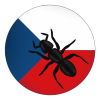
|
|
Ant Keeping →
General Ant Keeping →
DeforestationStarted by Idontexist , Oct 1 2025 |
|
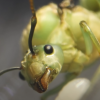
|
||
Ant Keeping →
Ant Keeping Journals →
Entomologyants's Dark Rover Ant Journal!Started by Entomologyants , Sep 18 2025 |
|

|
||
Ant Keeping →
Ant Keeping Journals →
Antz_Straya's Australian AntsStarted by Antz_Straya , Sep 7 2025 |
|
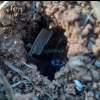
|
||
Ant Keeping →
Ant Keeping Journals →
cooIboyJ's Nylanderia vividula journalStarted by cooIboyJ , Sep 6 2025 |
|
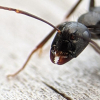
|
0 user(s) are reading this topic
0 members, 0 guests, 0 anonymous users




